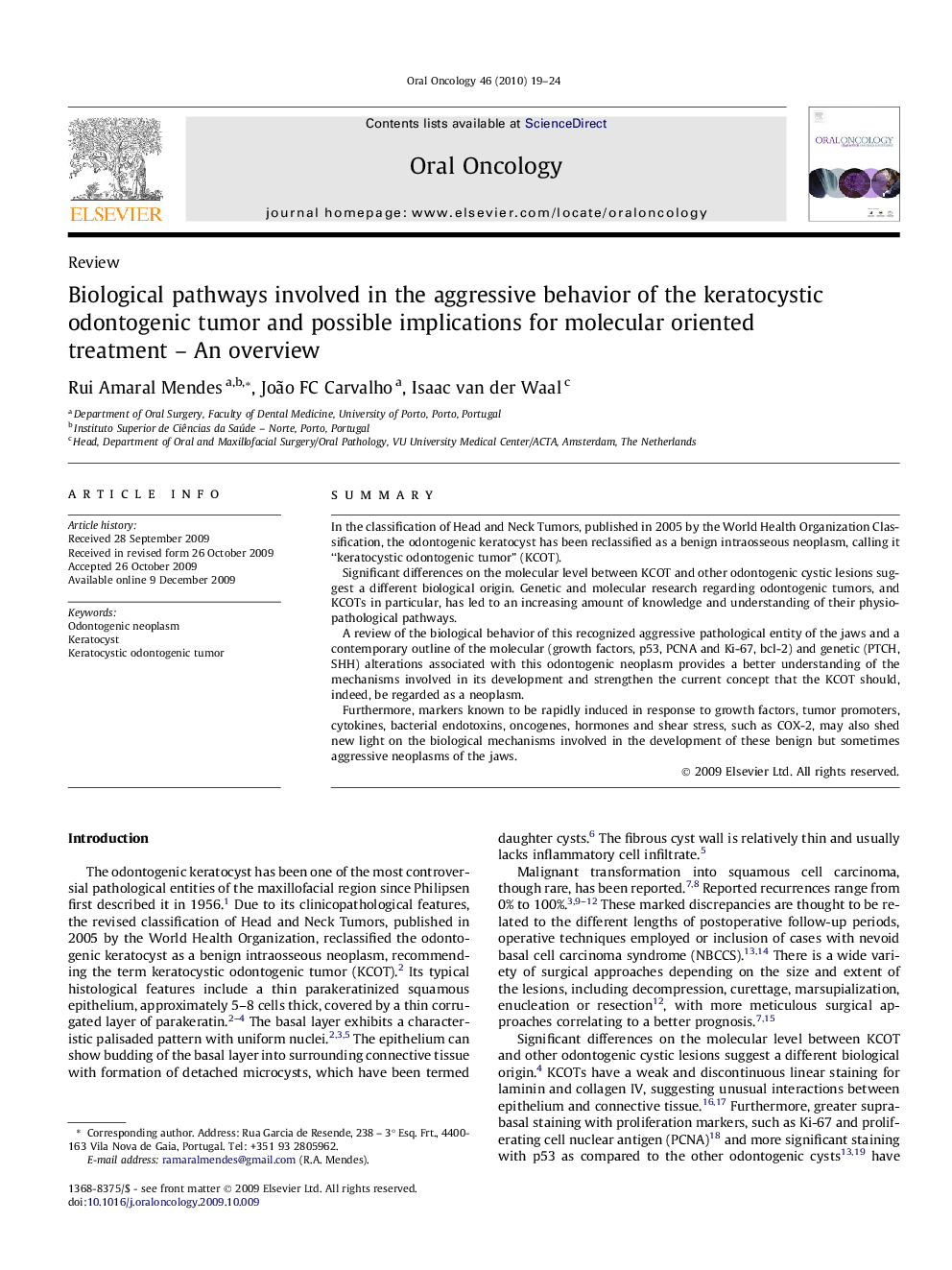| کد مقاله | کد نشریه | سال انتشار | مقاله انگلیسی | نسخه تمام متن |
|---|---|---|---|---|
| 3165151 | 1198823 | 2010 | 6 صفحه PDF | دانلود رایگان |

SummaryIn the classification of Head and Neck Tumors, published in 2005 by the World Health Organization Classification, the odontogenic keratocyst has been reclassified as a benign intraosseous neoplasm, calling it “keratocystic odontogenic tumor” (KCOT).Significant differences on the molecular level between KCOT and other odontogenic cystic lesions suggest a different biological origin. Genetic and molecular research regarding odontogenic tumors, and KCOTs in particular, has led to an increasing amount of knowledge and understanding of their physiopathological pathways.A review of the biological behavior of this recognized aggressive pathological entity of the jaws and a contemporary outline of the molecular (growth factors, p53, PCNA and Ki-67, bcl-2) and genetic (PTCH, SHH) alterations associated with this odontogenic neoplasm provides a better understanding of the mechanisms involved in its development and strengthen the current concept that the KCOT should, indeed, be regarded as a neoplasm.Furthermore, markers known to be rapidly induced in response to growth factors, tumor promoters, cytokines, bacterial endotoxins, oncogenes, hormones and shear stress, such as COX-2, may also shed new light on the biological mechanisms involved in the development of these benign but sometimes aggressive neoplasms of the jaws.
Journal: Oral Oncology - Volume 46, Issue 1, January 2010, Pages 19–24